Gravity/Magnet combined perpetual motion pond filter water pump
PERPETUAL MOTION WATER PUMP
Invented by JANNA J MORRISON in MAY, 2006
ALL RIGHTS RESERVED however PERMISSION TO FABRICATE for the sole purpose of testing it’s viability is granted with three conditions: 1. My full name must be written on it – clearly visible (written out same as the heading above this) 2. My invention must not be sold for profit or otherwise fabricated with intent to sell. 3. You must send me a video of it in action.
This is and original organic idea. My mind created as a solution to my father’s need to have a pond filter for his Koi pond- where electric was too far away and its often cloudy making solar power unreliable. The solution came as a dream that repeated night after night for at least 4 or 5 nights.
Unique design I researched every invention registry world wide, for all time, and the worlds patent offices records since patents started- for any similar designs. There are none. No one in recorded history tried to achieve perpetual motion with combined water and magnet power prior to my design. It’s the first of it’s kind to be documented. The obvious reason would be that electric pond water pumps weren’t invented until modern times. It was only a matter of time before someone realized combining the paddle wheel and a spinning magnet water pump would achieve perpetual motion. The fact that it was me was random chance.
Design adjustments: adjust the design as needed to compensate for the weight and performance of the materials used to make it. For example: The angle of the cup support arms will be dictated by the material used- metal or plastic and if its curved or not. Likewise- adjustments to the cup shape, size, angle and depth can be fine tuned. The total number of cups depends on how much flex there is in the arms- generally -as many as can fit with out touching when the flex is activated by the water.
__________________________
Physical Description: 15″ open water wheel with cut out support plate on both sides- with one side having a 1/2″ wide flat rim on the outside of it that’s cut into gear teeth. As the wheel spins- this gear track drives a small diameter gear rod that’s engaged with it at the very bottom of the wheel. The paddle wheel uses a bike like bearing system in its center. Around the bearing is an aluminum bushing that’s about 1″- 2″ thick and 1″- 1.5″ wide- centered on the axle baring. It has angled slots matching the width of the arm pieces and are about 1″ deep.The angle being decided by the flex ratio of the arm material used. It should flex enough to cause the cup to be opened out enough to properly catch the water – yet closed enough to maximize the return spring action- Think of a branch you pull back and release- The force of the water is resisted by the arm- when the weight and force of the water is strong- its arm bends causing the cup to drop down- when the wheel spins out of the flow of water while dumping the cup water at the same time- the tension is released adding to the spin of the wheel. Like a bonus torque system built into the water wheel.
The cup arms are made of metal or plastic- with the flexibility similar to a car dip stick- they should allow the cup to be displaced by the weight of the water by about 2″ from its normal position. It should be curved as shown in the picture. This is necessary to cause the energy to be expelled in the right direction. The goal is to have it create a spring thrust motion as it returns to its normal position as the water spills out. The cup is either aluminum or plastic with a receiving slot on the bottom to attach it to the arm. The cup shape is bowl towards the inside- or back of the cup- with the sides curling in slightly to form a containment lip- with the shape narrowing with taller curled in sides towards the front- where the bottom flattens out- to created a scooping shovel shape- this is meant to first prevent the water from splashing out of the cup, and then from leaving the cup too soon.
Note- cups on top right picture are angled wrong and every other one id shown with no support arm for easier viewing. This drawing is meant to help you visualize the curve the arm should have and how the base of the arm enters the hub at an angle.
The wheel is powered by 3 things- the pressure of the water as it hits the cup, gravity from the weight of the water held in the cup and lastly- the torque thrust generated by the flexing and contracting of the cups support arms.
The water is fed to the wheel by a standard magnet driven pond water pump. The pump is the style that has an outer magnet that spins around an enclosed magnetic propeller shaft. The exterior electric spinning magnet is replaced by 1 or 2 magnets attached to 2″ long support arms on one end of a 1/2″ diameter rod thats about 6″- 8″ long. The last 1″ of the other side of the rod is cut into gear teeth. At the middle of this rod- it passes thru a ceramic roller blade bearing used as a support with a bracket that holds the bearing in place.(see image)
The weight of the magnet side of the rod acts as a counter weight that holds the other end’s gear against the wheels gear track. The difference in gear size- 15″ across vs 1/2″ across is how the water wheels energy is amplified. It’s no different than riding a 10 speed bike. Rapid easy cranking is turned into slow hard pushing using only gear ratio to achieve it. In my invention I use a slow big wheel to turn a tiny wheel – this causes the tiny wheel to spin really fast- thus providing the water pump propeller with the speed it needs to pump enough water up to feed the paddle wheel. Its vital that the water hose diameter is what the pump comes with. If the flow of the water is too slow- reduce the size of the hose. The water it has to push up hill weighs less in a small hose- so the volume its able to push thru actually increases.
To make this invention have a purpose- it gets attached to a 1″ thick square wood base with 4″x4″ Styrofoam around it creating a “barge” that floats on the surface of a pond.. Below the paddle wheel the surface has filter pads on it- and the hard surface below is angled to collect the water and channel it off the back of the barge- powering the barge to move forward- circling its anchor point.
The water pump intake pipe extends down into the water about 10″ and has a secondary protection cage with a course screen on it – about 8 inches across and 4″ lower than the intake pipe. This is to prevent pond junk from clogging the pump.
To optimize the units function- add a submerged rudder, and an anchor with a tether long enough to allow barge to make a full circle without hitting shallow areas or plants. The action of the water exiting the barge will propel the barge to go around and around- The rudder is not necessary – but if omitted- have the anchor tether attach about 1/3 of the way down the side of the barge
___________________________________________________________
****I hereby grant permission to anyone who would like to build a working model of my invention as long as ” Invented by Janna J Morrison, May 2006, all rights reserved“ is written and clearly visible on the device. Please send me a video of it as well to jjessiemorrison@gmail.com My rights to this invention are reserved- meaning you cannot reproduce it for financial gain.
_____________________________
Perpetual motion by definition is something that is self powered. It’s stupid that some claim there are rules against using magnets. I ask Why? It’s ability to pull and push is no different than woods ability to float. This water pump will achieve perpetual motion because it requires no outside source of energy to continue running.
If you need more detailed drawings or have questions- please feel free to contact me. I’m really hoping someone decided to make it- make a great collage physics experiment.
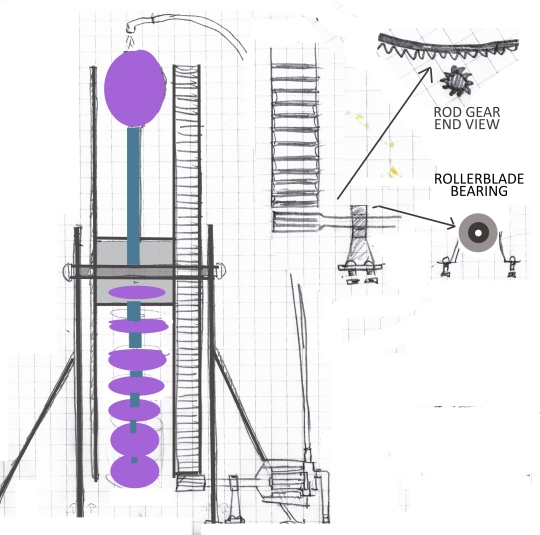
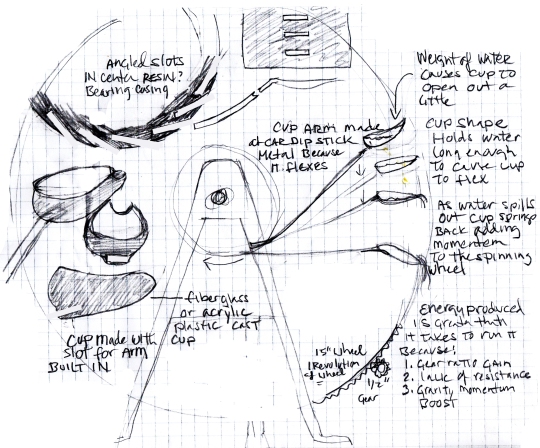
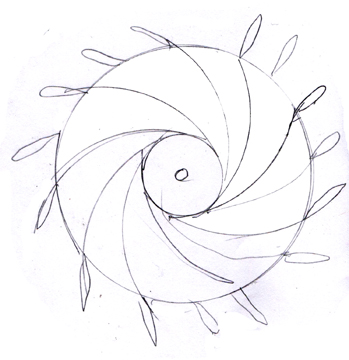
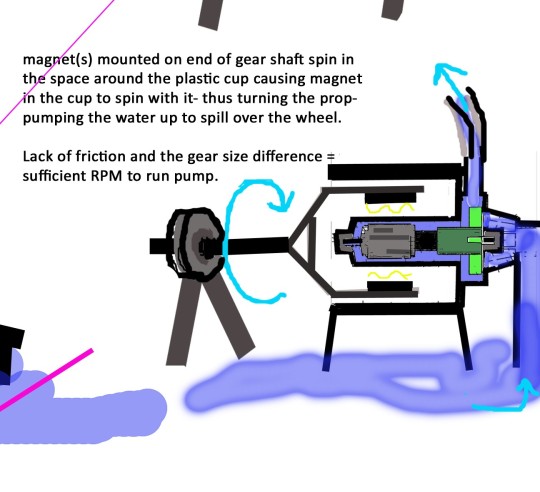
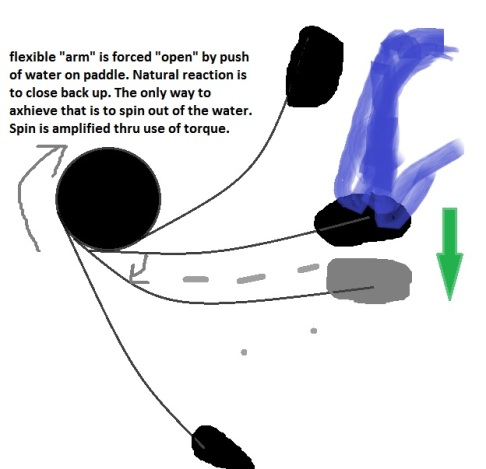
I love your idea and would love to build one for our pond. Do you have detailed drawings?